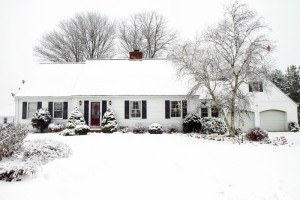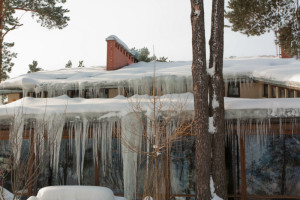Winter Damage to Your Chimney
Winter may be over and your fireplace closed down for the off-season, but that doesn’t mean it can’t cause problems for your home. It’s common for even a well- maintained chimney to experience winter damage. Like any system or appliance in the home, it should be serviced regularly in order to prevent serious damage and malfunction from time and use. Scheduling a chimney sweep and inspection in the spring can prevent further damage, allow for easier payment, and lead to a safer and more efficient chimney system.
Common Winter Damage
Your common winter damage can all be detected during a standard chimney sweep or diagnostic inspection. When we complete spring services to our customers at Billy Sweet Chimney Sweep, we often find masonry damage, damaged or missing parts, chimney leaks and water damage, and liner damage. Masonry damage and parts damage is most common after a long, bitter winter due to what we call the freeze/thaw cycle.
The Freeze/Thaw Cycle
When water penetrates the masonry, even small amounts of water, you can count on some winter damage when temperatures regularly cycle into freezing numbers. Water enters the system whether through rainfall, snow, or sleet and fills cracks and crevices. This water remains in these spaces as temperatures drop, causing it to freeze and expand. As the water expands, it breaks apart the masonry. When the temperature rises again due to sunlight on the chimney or a fire in the firebox, the ice melts and moves further into the damaged portions of masonry before the cycle repeats and it freezes again. This freeze/thaw cycle occurs all winter long, reaching into your masonry and devastating it if it isn’t corrected.
Spring Repairs and Leak Prevention
You can prevent chimney leaks even when your chimney has winter damage like masonry cracks and gaps. Scheduling services with Billy Sweet Chimney Sweep is your first step in chimney repair and leak prevention.
Routine Chimney Sweeps – The safest and most efficient chimney systems are those that are cleaned regularly and inspected annually, according to the National Fire Protection Association (NFPA). Sweeps not only keep your flue working properly and safely but during these important appointments, your chimney professional will notice and report any damage that should be repaired.
Annual Chimney Inspections – Like sweeps, inspections keep the system working properly, but an inspection is a thorough assessment of the entire system, including the interior flue. Most chimney damage isn’t noticed by the homeowner because it occurs behind the scenes. When you schedule an inspection with a certified expert, you can rest assured that no hazard has gone undetected.
Masonry Repairs – When your masonry has been damaged by winter weather, you can count on Billy Sweet Chimney Sweep for your masonry repairs. Whether it’s tuckpointing, crown replacement, or firebox repairs, we have got you covered.
Not only do we repair your winter damage, but we can apply a water repellent to help prevent recurrence next winter! Call Billy Sweet Chimney Sweep today at 617-469-4528 or request an appointment online.

